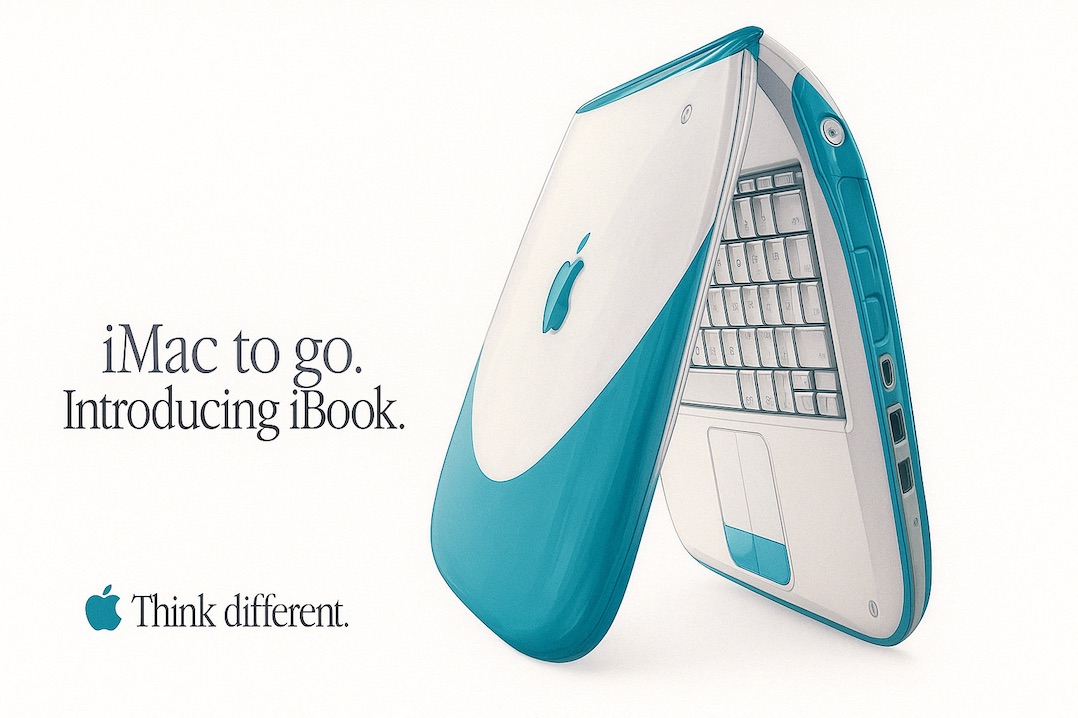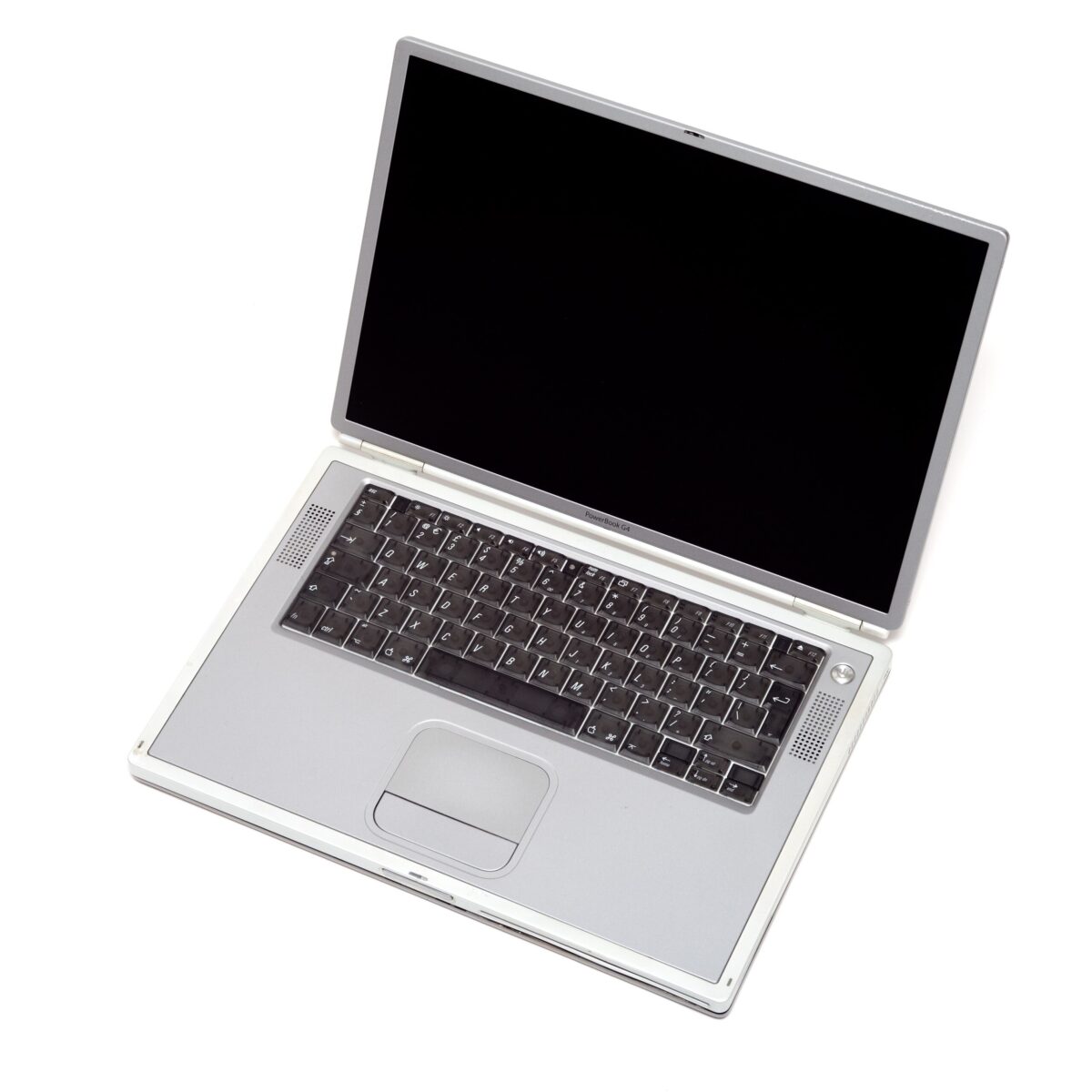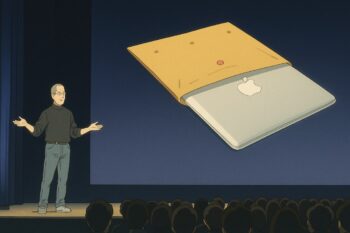MacBook (2000–2011) History – Part I
💻 Post-Millennium Apple Laptop Timeline
Steve Jobs returned to Cupertino in 1997; became permanent CEO in 2000

2001 iBook advertisement
Between 2001 and 2003, Apple was determined to position the Mac as the creative, stylish alternative to the beige-box world of PCs. This marked a turning point in its brand identity, as the company leaned into its “Think Different” ethos, spotlighting sleek industrial design and tight integration across hardware and software. With the iLife suite—including iTunes, iMovie, and iPhoto—bundled with every Mac, Apple marketed its computers as complete digital hubs for music, video, and photography in an emerging digital lifestyle.
Apple also transitioned from niche tech ads to more emotionally resonant, mainstream campaigns. The bold iPod + iTunes ads featuring silhouettes dancing against vibrant backgrounds became instantly iconic, while Mac promotions emphasized the elegance and simplicity of OS X, PowerBooks, and the iMac G4. Across keynotes and media, Apple consistently projected a vision of beauty, minimalism, and seamless integration—qualities that soon became synonymous with its brand.
Central to this transformation was Steve Jobs’ collaboration with Jony Ive. After returning in 1997, Jobs promoted Ive—then Head of Industrial Design—to Senior Vice President, granting him the authority and creative freedom to reshape Apple’s design philosophy. Their partnership quickly bore fruit with the 1998 iMac, and continued with breakthrough products like the 2001 iBook G3 Dual USB, or “iceBook.” Departing from the playful clamshell model, the iBook introduced a clean, professional look with a compact, symmetrical form and glossy white polycarbonate shell—hallmarks of Ive’s vision.
Though Ive rarely spoke publicly about the device, its minimalist design and honest use of materials echoed the principles he championed: clarity, simplicity, and intuitive beauty. The iBook was a clear expression of the Jobs-Ive design ethos—and a preview of the Apple aesthetic that would define the decade ahead.
- 2000 – PowerBook G3 “Pismo”
Final revision of the G3 line. Featured FireWire, AirPort support, and swappable drive bays. - 2001 – iBook G3 (Dual USB, “IceBook”)
Radically redesigned in a white plastic clamshell form. Marked Apple’s consumer shift toward iMac-inspired aesthetics. - 2001 – Titanium PowerBook G4
First use of titanium metal and a widescreen display in a Mac laptop. Ultra-thin for the time; set the tone for future pro laptops.
Titanium PowerBook – Photo Courtesy: Ashley Pomeroy via Creative Commons
- 2003 – Aluminum PowerBook G4 (12″, 15″, 17″)
Sleek aluminum unibody enclosure debuted. The 17” model was the largest and most advanced laptop Apple had ever made at that point. - 2005 – iBook G4 (Final revision)
Last G4-based consumer laptop before Intel transition. Marked the end of the PowerPC era for entry-level Macs. - 2006 – MacBook (Intel-based)
Replaced the iBook. Plastic shell, available in black or white, with Intel Core Duo CPUs. - 2006 – MacBook Pro (Intel-based, 15″ and 17″)
Replaced PowerBook G4; retained aluminum design. Featured new Intel Core Duo processors, built-in webcam (iSight), and magnetic MagSafe power connector. - 2008 – MacBook Air (1st Gen)
Revealed in a manila envelope at Macworld. Thinnest laptop Apple had ever made; minimal ports and no optical drive.

- 2008 – Unibody MacBook / MacBook Pro
New machined aluminum unibody introduced. Later split the lineup between consumer and pro models again. - 2010 – MacBook Air (2nd Gen Redesign)
Introduced wedge shape and SSD standard across the line. Became a blueprint for all modern thin-and-light laptops. - 2011 – MacBook Pro (Thunderbolt & Quad-core)
Introduced Thunderbolt I/O. High-end models featured Intel Core i7 quad-core processors. Final major MacBook Pro update before Retina era (2012).
Part Zero – Apple Origins: Lisa/Macintosh XL
Part 1 – Post Millennium Mac Laptops (This post)
Part II – Rise of the Intel Macs (Coming soon)
Part III – The Fall of Intel MacBook Pros
Meanwhile, here’s a fun video with iJustine and MKBHD unboxing a brand new iBook G3.
